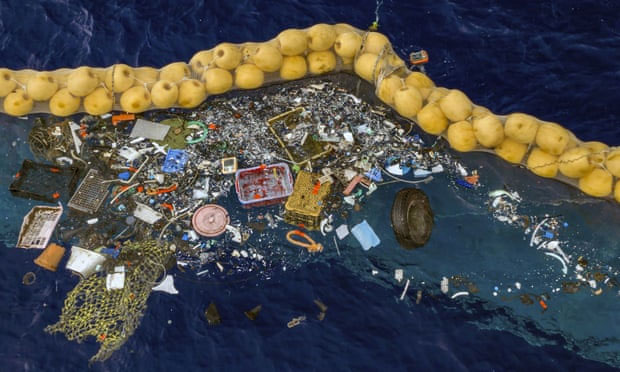Referred to as the new coastal living community, these clusters of organisms are thriving in the Great Pacific Garbage Patch and drifting along with the currents.
According to The Guardian, a new study published in the journal Nature Communications reveals that the plastic waste islands in the ocean are becoming artificial habitats for coastal organisms.

Trash collected at sea. (Photo: AP)
The authors of the study provided this information after observing discarded water bottles, old toothbrushes, and fishing nets thrown into the ocean. Coastal organisms may be evolving to better adapt to living on plastic waste.
Ten years ago, marine researchers believed that coastal organisms could not survive drifting in the harsh oceanic zones. However, the tsunami in Japan in 2011 changed this perspective. At that time, around 300 Asian marine species clung to floating plastic waste to reach the shores of North America.
Now, researchers have a term for these drifting organisms: the new coastal living community, which includes species such as anemones, sea stars, shrimp, and mollusks thriving on plastic waste and traveling wherever the currents take them. Plastic waste is creating opportunities for coastal organisms to expand their geographical distribution beyond what researchers previously thought.
This phenomenon appears to be marine organisms triumphing and adapting to living conditions despite human waste disposal. However, Dr. Juan Josse Alava, an expert at the University of British Columbia, argues otherwise. He states that this phenomenon will introduce invasive species to sensitive habitats, where they could invade and devastate native communities.
Moreover, these communities are essentially “ecological traps.” The reason is that while drifting with the floating waste, the organisms living on it attract higher trophic level species, such as fish, turtles, and mammals. When these species enter the area with floating waste in search of food or shelter, they consume the organisms living on the plastic waste and inadvertently ingest plastic, which significantly increases their risk of death.
A 2021 report from the United Nations indicates that the growing scale of plastic pollution poses a threat to the entire marine and oceanic ecosystems worldwide.


















































